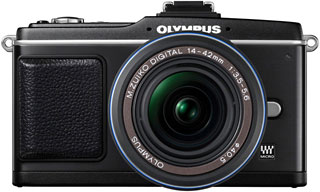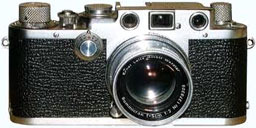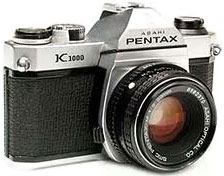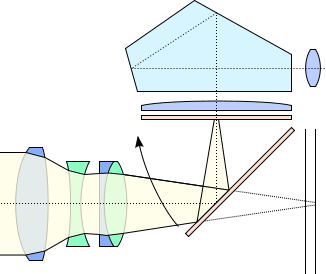Recycled Computing
It's Time to Buy Apple Stock
- 2011.04.06
Here's the thing. My wife and I are two totally different computer users.
Her school district supplies her with a new MacBook every three years, which she uses for email and word processing. That's it. No calendar use, no scheduling, no database, and no real power hog applications. Only recently has she added dictation software to her word processing. "Wonderful," she says. "Now I can write things faster."
Me, I'm always pushing the envelope. I'm always trying to make computer devices do stuff that they have no business doing. I'm still trying to make old hardware work in modern environments.
New software that allows me to do VNC on my iPod touch and iPad? I can't wait to give it a try!
When I got my new 4th generation iPod touch, my wife lay claim to my old 1st generation iPod touch and - wait for it - listens to her iTunes library and plays games on it. But no email and no calendar.
So imagine my surprise when she borrowed my iPad the other day. What did she use it for? She missed one of her favorite TV shows, and my iPad has an app for that specific program. (Her overindulgent husband downloaded it from the App Store.) She was able to "time shift" and watch the episode she missed. The app also syncs with the program on the air through the iPad's built-in microphone. I have no idea what this means or entails, but from my perspective, it helps me justify the iPad's purchase price.
So buy some Apple stock. If two such different users as my wife and I can both use an iPad, there's no end to the number of "reality altering" devices that Steve Jobs can convince people they have to buy.
The 35mm Camera Legacy

Olympus EP-2
As to something I have to buy, I am seriously lusting after the new camera of my dreams - an Olympus EP-2. Let me explain, by using the history of 35mm cameras, why I want one of these little darlings and how the EP-2 is both a leap forward and a look back.

Leica IIIf 35mm rangefinder camera
Back in the dim, dark past (before cable), the standard movie film was 35mm with built-in sprocket holes to run at high speeds through movie cameras. Someone (in Germany) had the bright idea of using up leftover film stock by cutting it up and using it in a still camera, and the full-frame 35mm camera was born. Leica and Contax quickly built their 35mm cameras, which where really little more than a small metal film carrier with a viewfinder on top.
The problem with viewfinders is that, while the rangefinder windows were okay for lenses with focal lengths from 35mm up to 135mm (focal lengths are a different measurement than film size), if you went further up or down the range, a separate viewfinder was needed. Worse, some bright folks were thinking about attaching the camera to microscopes and telescopes.

Pentax K1000
This called for the development of a new type of 35mm camera, the single-lens reflex (SLR for short). I have included an image of the venerable Pentax K1000, a camera that is almost unchanged since I owned a Pentax SL and Spotmatic in the 1970s.

Cross section of an SLR
I have also included a diagram showing how an SLR works. By looking through the lens that will take the picture, SLRs can be attached to all shorts of optical devices. As a result, I own 24mm, 35mm, 55mm macro, and a 200 mm lenses for my terribly old Olympus OM-1 and OM-4 35mm film cameras. I would have purchased more lenses, but a lack of funding put a halt to that.
Along came the digital revolution, and both viewfinder and SLR designs were used in camera design. Viewfinder cameras dominated the point and shoot market, and the high end digital cameras were SLRs. Eventually someone noticed that the tiny screens on the back of digital cameras were what people were using to compose and take pictures. The folks at Olympus reasoned that the pentaprism was just a carryover from film photography and decided to market the Pen digital camera, a 12.3 megapixel (MP) digital camera without a pentaprism. Olympus. Without the bulky pentaprism, the Pen cameras have interchangeable lenses in a much smaller package.
Which brings us back to those early Leicas and Contaxes. The Pen E-P2 is the same size as those cameras and also allows the use of a viewfinder for the 17mm lens. Shades of the past.

Olympus MF-2 adapter
Another nice feature of the Pen cameras is an adapter (MF-2) that allows the use of old OM lenses - like the ones I have leftover from my film camera days. There is limited functionality between the OM lenses and Pen cameras, but I can still focus a lens manually and use stop-down metering.
Since 35mm camera lenses are almost twice the focal length when used
with digital cameras, I will have the equivalent of a 400mm telephoto
lens without the bulk! I love when the old works with the new!
![]()
Join us on Facebook, follow us on Twitter or Google+, or subscribe to our RSS news feed
Today's Links
- Mac of the Day: PowerBook 1400, introduced 1996.10.01. Considered by many the best pre-G3 PowerBook with a small footprint and great keyboard.
- Support Low End Mac
Recent Content
About LEM Support Usage Privacy Contact
Follow Low End Mac on Twitter
Join Low End Mac on Facebook
Favorite Sites
MacSurfer
Cult of Mac
Shrine of Apple
MacInTouch
MyAppleMenu
InfoMac
The Mac Observer
Accelerate Your Mac
RetroMacCast
The Vintage Mac Museum
Deal Brothers
DealMac
Mac2Sell
Mac Driver Museum
JAG's House
System 6 Heaven
System 7 Today
the pickle's Low-End Mac FAQ
Affiliates
Amazon.com
The iTunes Store
PC Connection Express
Macgo Blu-ray Player
Parallels Desktop for Mac
eBay

